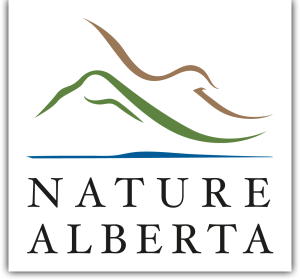Grasslands

Alberta is a great place to live. It’s a big beautiful province full of all kinds of natural wonders. This is where we introduce you to the diversity of wildlife and unique and interesting wild spaces that are part of your Big Alberta Backyard. Here you will learn all about the Grasslands region.
What is a Grassland?
Grasslands exist all over the world, except in really cold places like Antarctica or the Arctic. There exists many different names for grasslands depending on which continent you come from. Grasslands are also called prairies here in North America but in somewhere like Africa they are called either savannahs or veldts or in Australia they are called rangelands. All of these different names essentially mean the same thing, land that is covered mostly by grass. Trees don’t often grow in grasslands because these areas are often so dry and only a small amount of rain falls in these places. In Alberta, our grasslands make up the south eastern corner of our province near the cities of Medicine Hat and Lethbridge. There you can see fields of grass growing for kilometers and kilometers. These areas are very important in Alberta. Let’s find out why!
Why are Grasslands important?
Grasslands are important for many many reasons. Several animal species live in these areas because grasslands are warm and dry. Animals that need a lot of warmth to survive, use the grasslands as their home. Grasslands are also important for humans because they make great pastures and farmland. This means that often wild animals and humans compete for the use of these areas. Because of this competition, most of our grassland areas in Canada have disappeared and have been transformed into cropland with only about one quarter of our grasslands still remaining. The animals that live in these areas have a hard time surviving and keeping their population numbers high because their habitat continues to disappear. Swift foxes are an example of a type of animal that lives in grasslands. In Canada, Swift foxes actually completely disappeared in the 1930s and we had to work hard to bring them back into our country. The reason they disappeared is because they lost most of their habitat. There are several other types of animals that live in these areas that are also endangered such as the burrowing owl, ferruginous hawk, peregrine falcon, bison, black-footed ferret (found only in Grasslands National Park in Saskatchewan) and, short-horned lizard. We must work hard to make sure that our grasslands remain in this province in order to keep the habitat of many of these endangered animals intact.
What is being done and how can we help?
Grasslands are one of the most endangered ecosystems in Canada and the world (Hinterland Who’s Who, 2010). We have to work hard to protect them because they are the home of many species, most of which are endangered. There already exists programs that are working to help protect the grasslands that remain. The Canadian Parks and Wilderness Society (CPAWS) is an organization that is helping to protect our grasslands by creating plans to better manage these areas. They do research on the areas that are most at risk and make plans to better manage them. As everyday people, we can also help out by learning all about grasslands and spreading the knowledge of what we know about these areas to other people. When we visit grassland areas, we must respect these areas by not disturbing the land and making sure to remain on designated roads and trails. Becoming educated and respecting the land is the best thing we can do to preserve our grassland habitats.
References:
cpaws.org/campaigns/grasslands
www.hww.ca/assets/pdfs/factsheets/grasslands-factsheet-pdf.pdf
Join Us!
Receive our E-newsletter

NATURE ALBERTA
email: info@naturealberta.ca
phone: (780) 427-8124
mail: 3rd Floor, Percy Page Centre
11759 Groat Road
Edmonton, AB T5M 3K6
Nature Alberta is incorporated as the Federation of Alberta Naturalists under the Alberta Societies Act and is a registered charitable organization.
Registered Charity
#118913896 RR0001
